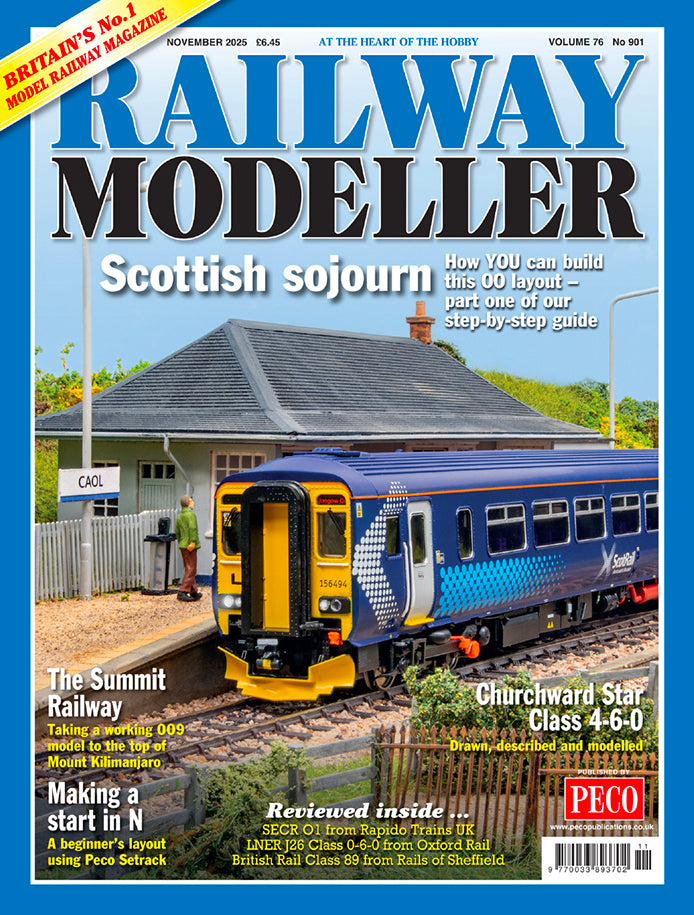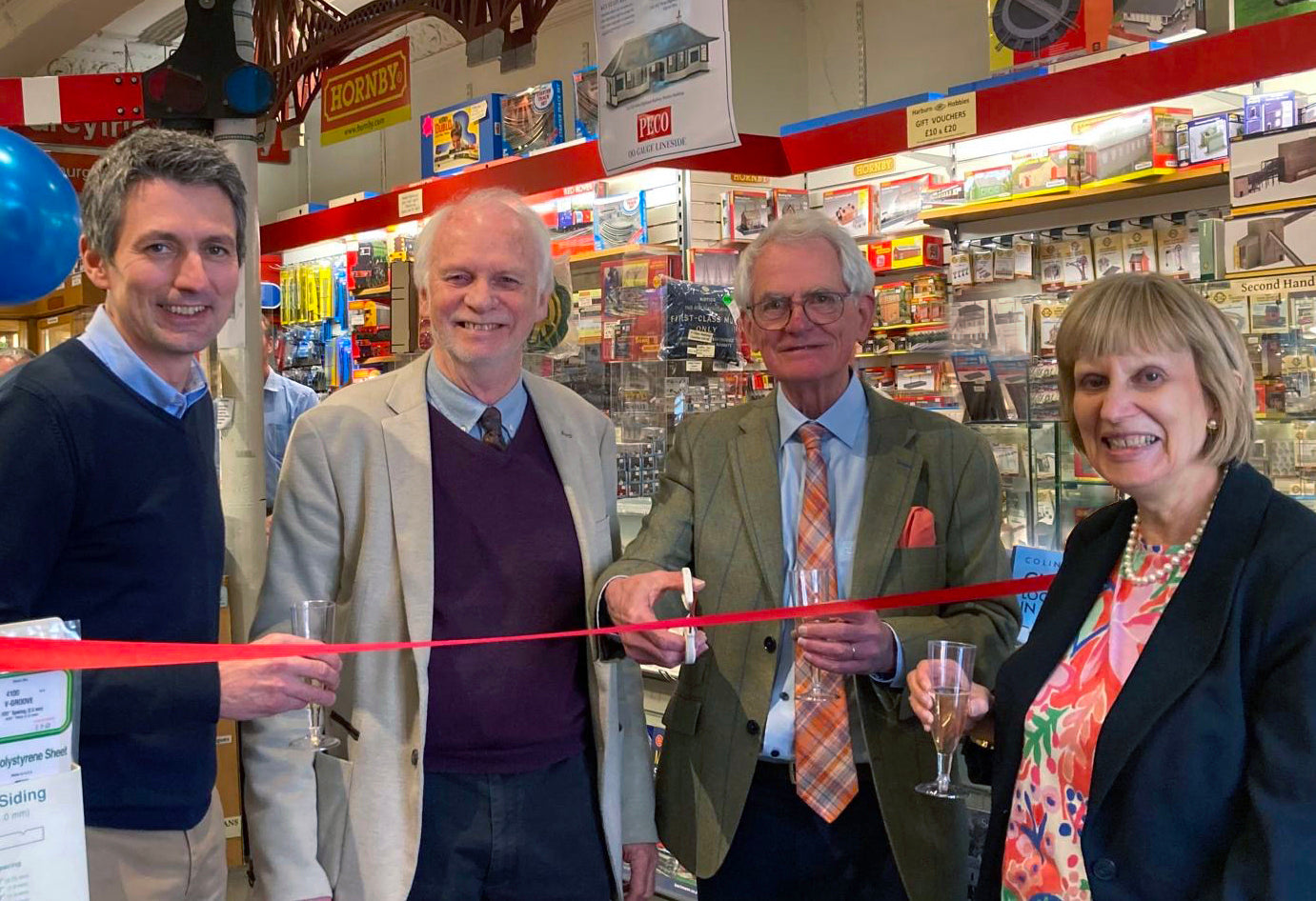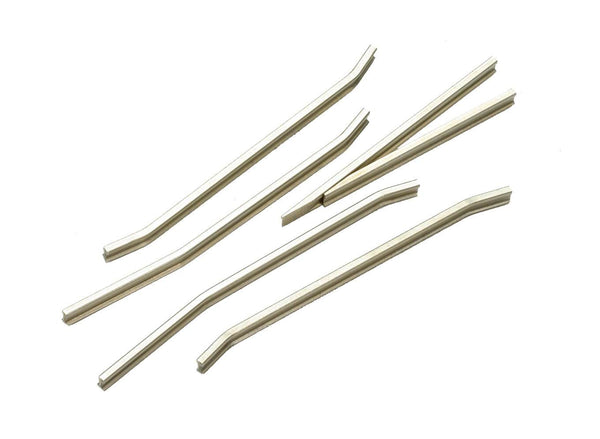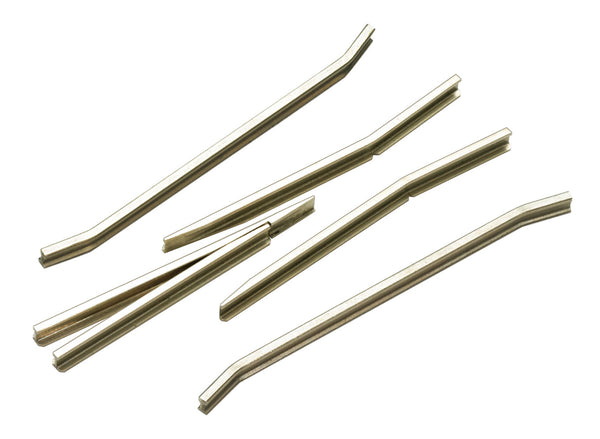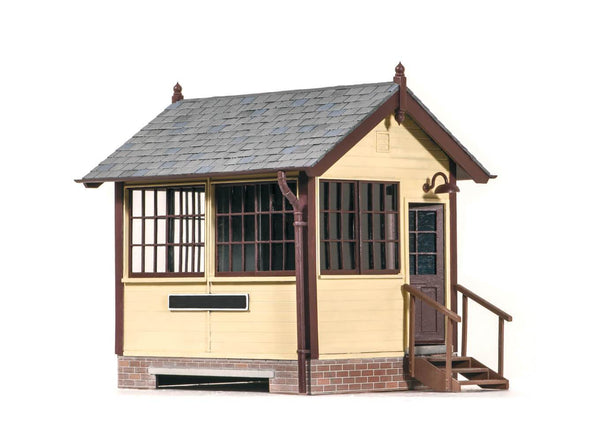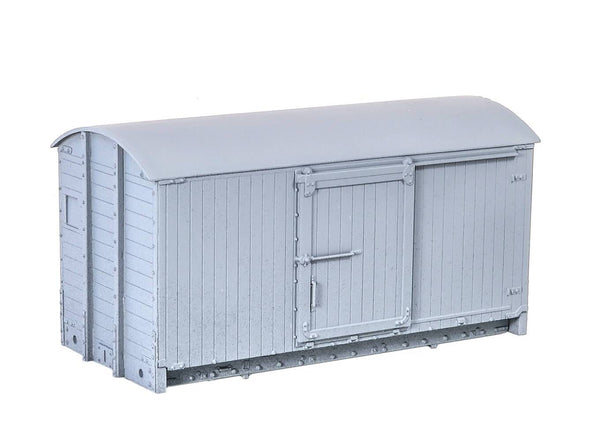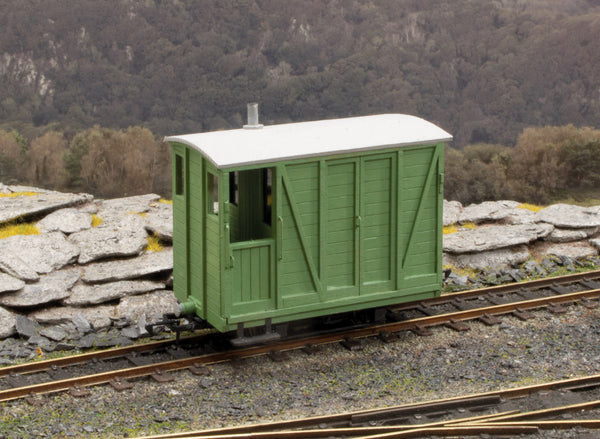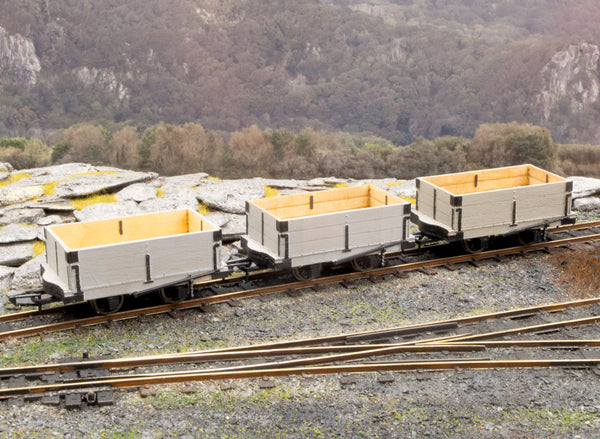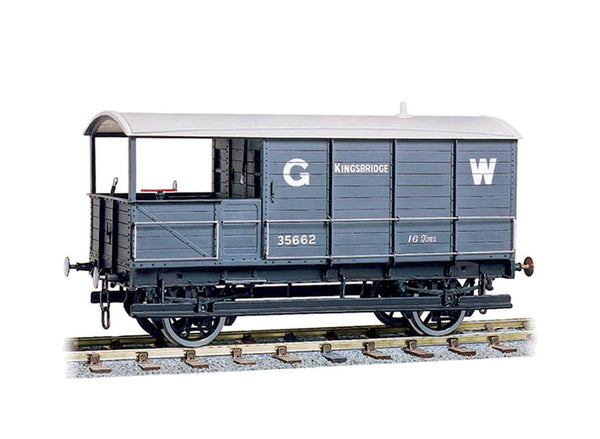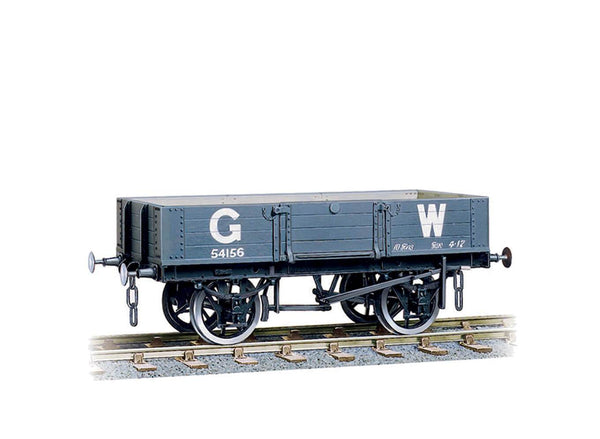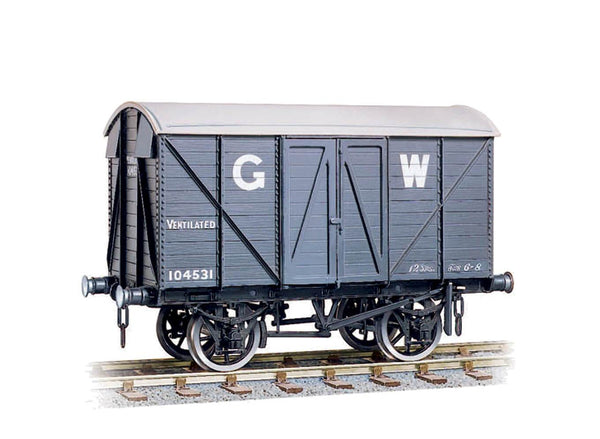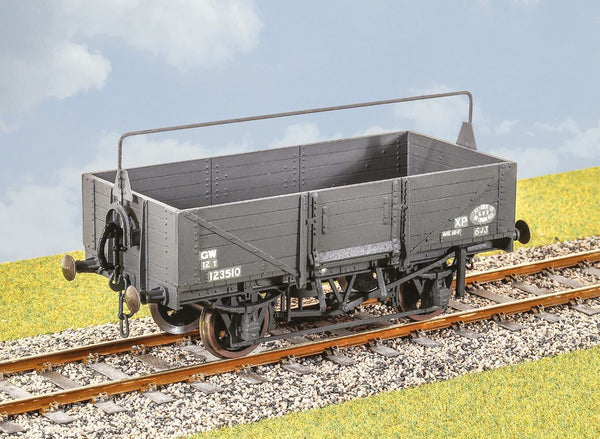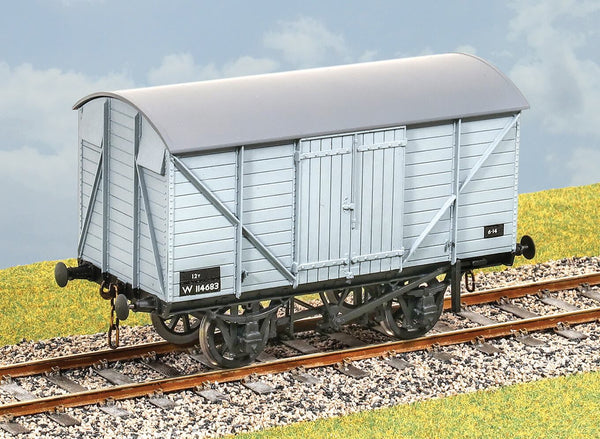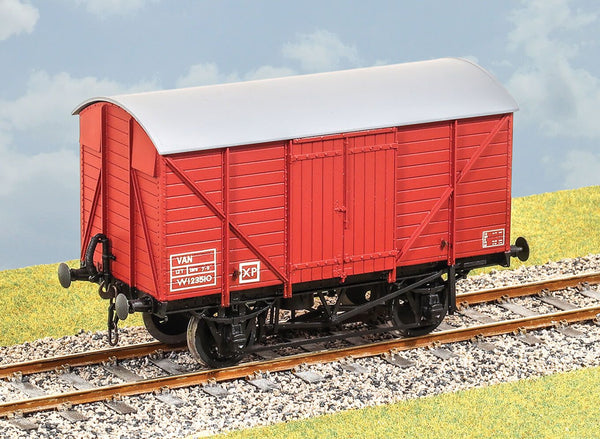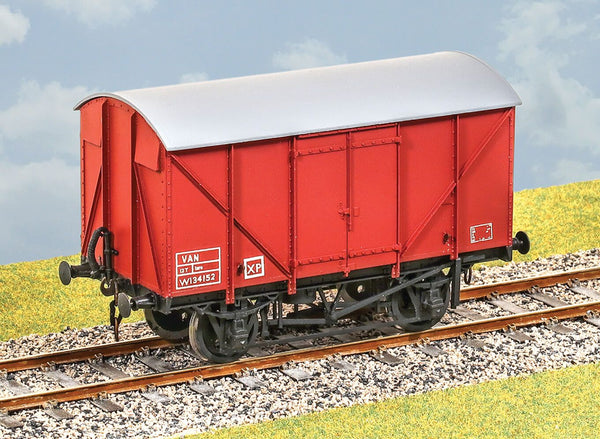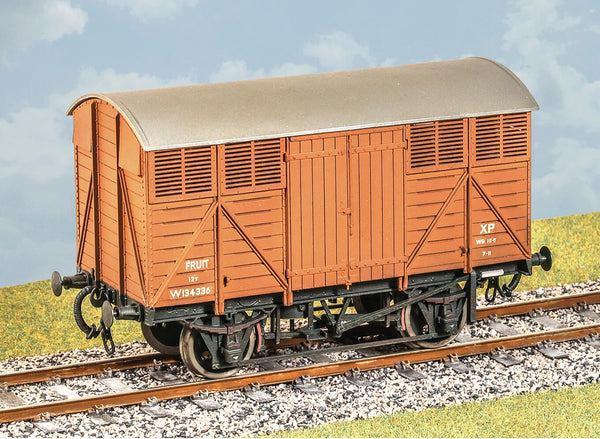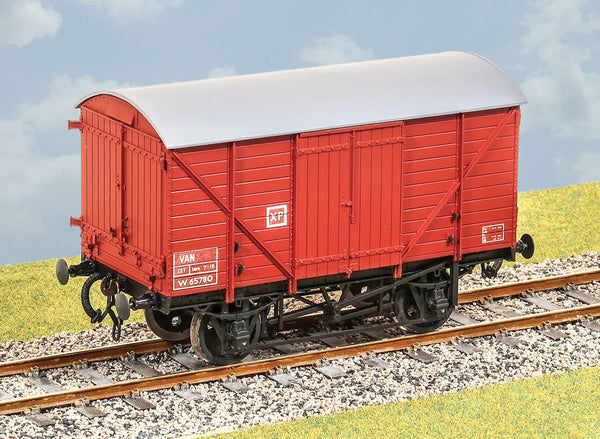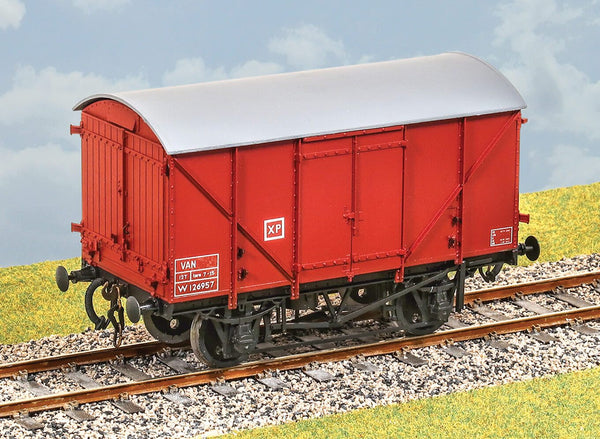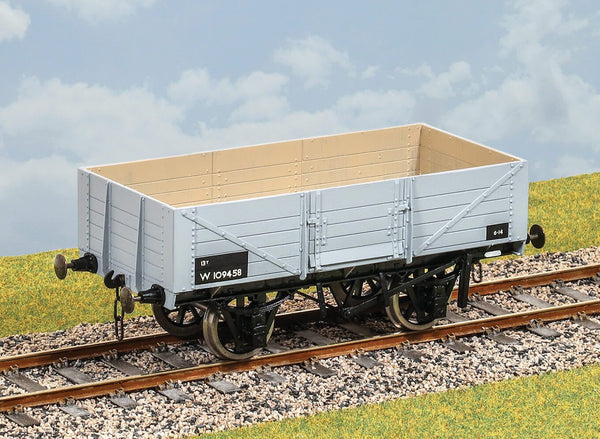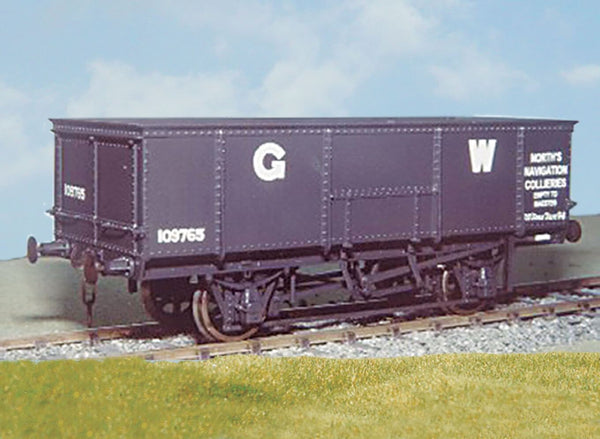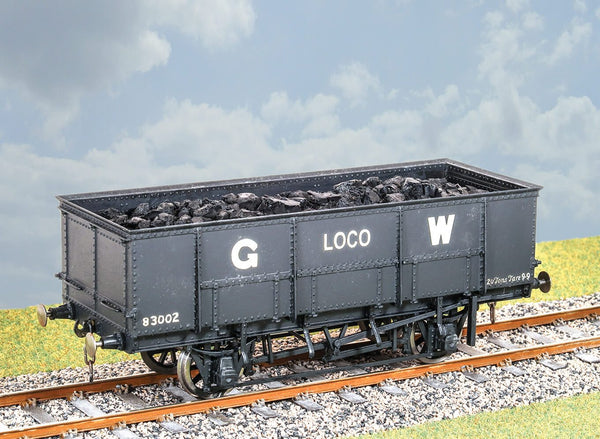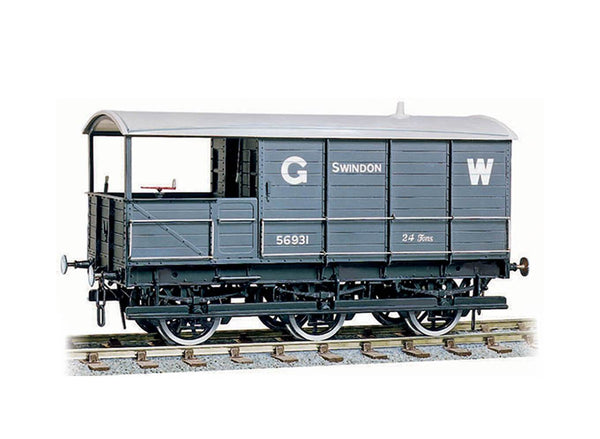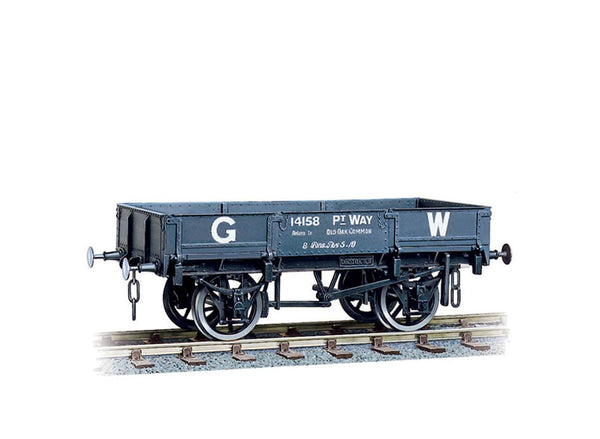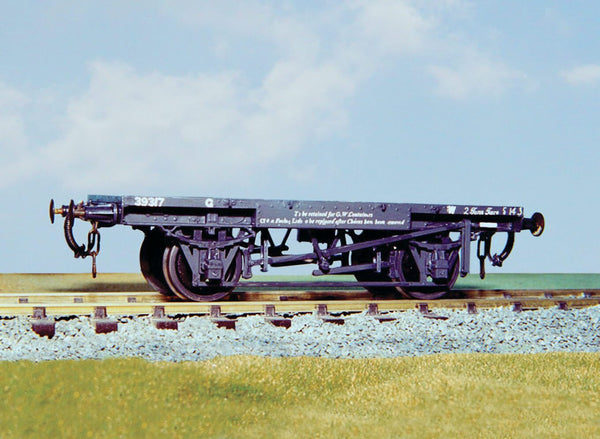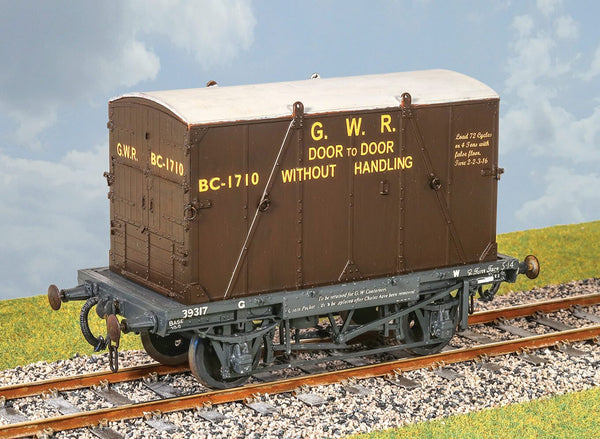BROWSE PECO PRODUCTS
Browse through our complete product portfolio.
233 Products Found
Frog and Wing Rails
1 set of Frog and Wing Rails for the construction of turnouts, using Code 124 Bullhead rail.
Frog, Wing and Check Rails
1 set of Frog and Wing Rails for the construction of turnouts, using Code 143 Flat Bottom rail.
Ground Level Signal Box
Kit of a typical small box, often found on a branch line or controlling a main line yard.
GVT Brakevan Laser-cut kit (NG7)
Laser cut wagon kit of a 4-wheel Glyn Valley Tramway brakevan.
GVT Open Wagons (3) Laser-cut kits (NG7)
Laser-cut wagon kit of 3 x 4-wheel narrow gauge open wagons found at many industrial locations.
GWR 'Toad' Brake Van
Iconic GWR Goods Brake Van. Unlike other companies' brake vans, the GWR's unique single verandah design meant that they had to be turned on a turntable before the return journey. Easy to assemble from the correctly coloured injection moulded components (no painting necessary). Kits include Transfers. Buffers are sprung and 3-link couplings are included on all models, while the BR wagons also feature working axlebox springs and moveable brake levers. Fine scale metal tyred wheels on pin-point axles supplied, spoked for the GWR wagons or 3-hole disc for the BR types. Fully illustrated instructions included.
GWR 10ton 4 Plank Open Wagon
Several thousand of these wagons were built between 1888 and 1902. Kit features a pair of working central side-drop doors. Easy to assemble from the correctly coloured injection moulded components (no painting necessary). Kits include Transfers. Buffers are sprung and 3-link couplings are included on all models, while the BR wagons also feature working axlebox springs and moveable brake levers. Fine scale metal tyred wheels on pin-point axles supplied, spoked for the GWR wagons or 3-hole disc for the BR types. Fully illustrated instructions included.
GWR 10ton Ventilated Box Van
These vans were in general use for transporting perishable traffic from 1925. Some were converted for banana traffic, others were designated exclusively for fish. Kit includes a choice of different ventilators to suit the different uses. Easy to assemble from the correctly coloured injection moulded components (no painting necessary). Kits include Transfers. Buffers are sprung and 3-link couplings are included on all models, while the BR wagons also feature working axlebox springs and moveable brake levers. Fine scale metal tyred wheels on pin-point axles supplied, spoked for the GWR wagons or 3-hole disc for the BR types. Fully illustrated instructions included.
GWR 12/13ton Open Goods Wagon
Dia. O32: over 10,000 unfitted built (1933 – 1940); O33: 948 built with vacuum brake and tarpaulin rails. Most lasted into the 1970s, with some featuring fabricated steel strengthening. The kit covers all variants. Transfers for GWR and BR. These finely moulded plastic wagon kits come complete with pin point axle wheels and bearings, 3 link couplings and transfers. This kit is supplied with pre-coloured moulded parts although painting can improve the appearance. Additional parts to enable the vehicle to be modelled incorporating modifications made to the prototypes during their working life are included where appropriate.
GWR 12ton Covered Goods Wagon
950 wagons of this design were built between 1929 and 1933. Withdrawal took place in the early 1960s. These wagons were regarded as ‘common user’ so would have been found across the whole network. Transfers for GWR and BR. These finely moulded plastic wagon kits come complete with pin point axle wheels and bearings, 3 link couplings and transfers. This kit is supplied with pre-coloured moulded parts although painting can improve the appearance. Additional parts to enable the vehicle to be modelled incorporating modifications made to the prototypes during their working life are included where appropriate.
GWR 12ton Covered Goods Wagon
Dia. V24: hand brake only (1933 – 1943); V23: vacuum brakes (1933 - 1941); V26, known as ‘PARTO’ was as a V23 with internal partitions (1935 – 1939). Many lasted into the 1970s. Transfers for GWR and BR. These finely moulded plastic wagon kits come complete with pin point axle wheels and bearings, 3 link couplings and transfers. This kit is supplied with pre-coloured moulded parts although painting can improve the appearance. Additional parts to enable the vehicle to be modelled incorporating modifications made to the prototypes during their working life are included where appropriate.
GWR 12ton Covered Goods Wagon
Plywood body construction came about as a result of a shortage of wooden planks at the end of the last war. A total of 1,100 vans were built, 350 with only a hand brake (diagram V37), which eventually had vacuum brakes retro-fitted. They lasted into the 1970s. Transfers for GWR and BR.These finely moulded plastic wagon kits come complete with pin point axle wheels and bearings, 3 link couplings and transfers. This kit is supplied with pre-coloured moulded parts although painting can improve the appearance. Additional parts to enable the vehicle to be modelled incorporating modifications made to the prototypes during their working life are included where appropriate.
GWR 12ton Fruit Van
200 of these vans were built 1937/38 to convey Guernsey tomatoes. They were also used for other fruit and vegetable traffic. The fleet lasted into the 1970s, being used for general merchandise outside of the season. Transfers for GWR and BR. These finely moulded plastic wagon kits come complete with pin point axle wheels and bearings, 3 link couplings and transfers. This kit is supplied with pre-coloured moulded parts although painting can improve the appearance. Additional parts to enable the vehicle to be modelled incorporating modifications made to the prototypes during their working life are included where appropriate.
GWR 12ton Motor Car Van
350 of these were built between 1933 and 1936. Their telegraphic code was MOGO. The main traffic was from Morris Cowley, but might also have been used for general merchandise. All were withdrawn in the 1960s. Transfers for GWR and BR. These finely moulded plastic wagon kits come complete with pin point axle wheels and bearings, 3 link couplings and transfers. This kit is supplied with pre-coloured moulded parts although painting can improve the appearance. Additional parts to enable the vehicle to be modelled incorporating modifications made to the prototypes during their working life are included where appropriate.
GWR 12ton Motor Car Van
Similar to diagram G31, these wagons were built in 1946 and 1947, but with a plywood body. They lasted into the 1960s. Transfers for GWR and BR. These finely moulded plastic wagon kits come complete with pin point axle wheels and bearings, 3 link couplings and transfers. This kit is supplied with pre-coloured moulded parts although painting can improve the appearance. Additional parts to enable the vehicle to be modelled incorporating modifications made to the prototypes during their working life are included where appropriate.
GWR 13ton Open Goods Wagon
Almost 2,000 of these wagons were built between 1924 and 1929. The design was one of the first produced by the GWR using Railway Clearing House spec brake gear. Many survived into 1960s. These finely moulded plastic wagon kits come complete with pin point axle wheels and bearings, 3 link couplings and transfers. This kit is supplied with pre-coloured moulded parts although painting can improve the appearance. Additional parts to enable the vehicle to be modelled incorporating modifications made to the prototypes during their working life are included where appropriate.
GWR 20ton Felix Pole Coal Wagon
Almost 1,000 of these high capacity wagons were built in the 1920s for Welsh coal traffic. Rerated to a 21-ton capacity wagon during the Second World War, they were in traffic until the 1960s. Transfers for GWR and BR, and for Norths Navigation Collieries. These finely moulded plastic wagon kits come complete with pin point axle wheels and bearings, 3 link couplings and transfers. This kit is supplied with pre-coloured moulded parts although painting can improve the appearance. Additional parts to enable the vehicle to be modelled incorporating modifications made to the prototypes during their working life are included where appropriate.
GWR 20ton Goods Brake Van
221 of these vans were built between 1927 and 1931. Seen all over the GWR, and later BR Western Region. Examples lasted until the 1960s. Transfers for GWR and BR. These finely moulded plastic wagon kits come complete with pin point axle wheels and bearings, 3 link couplings and transfers. This kit is supplied with pre-coloured moulded parts although painting can improve the appearance. Additional parts to enable the vehicle to be modelled incorporating modifications made to the prototypes during their working life are included where appropriate.
GWR 20ton Loco Coal Wagon
Converted from the “Felix Pole” wagons (PS41), 200 were so treated in 1934-35, to convey coal to GWR locomotive sheds. Featuring extra side doors, they joined the general coal fleet in the 1950s. Transfers for GWR and BR. These finely moulded plastic wagon kits come complete with pin point axle wheels and bearings, 3 link couplings and transfers. This kit is supplied with pre-coloured moulded parts although painting can improve the appearance. Additional parts to enable the vehicle to be modelled incorporating modifications made to the prototypes during their working life are included where appropriate.
GWR 24ton Six-wheel Brake Van
On heavy unfitted coal trains form the Welsh Valleys to London, 6 wheels and 8 tons of extra weight were required to produce sufficient braking force to keep the train under control. Easy to assemble from the correctly coloured injection moulded components (no painting necessary). Kits include Transfers. Buffers are sprung and 3-link couplings are included on all models, while the BR wagons also feature working axlebox springs and moveable brake levers. Fine scale metal tyred wheels on pin-point axles supplied, spoked for the GWR wagons or 3-hole disc for the BR types. Fully illustrated instructions included.
GWR 8ton Steel Permanent Way Wagon
These rugged wagons were used on track maintenance trains together with the Permanent Way Brake Van (W602). Kit features 4 working side-drop doors. Easy to assemble from the correctly coloured injection moulded components (no painting necessary). Kits include Transfers. Buffers are sprung and 3-link couplings are included on all models, while the BR wagons also feature working axlebox springs and moveable brake levers. Fine scale metal tyred wheels on pin-point axles supplied, spoked for the GWR wagons or 3-hole disc for the BR types. Fully illustrated instructions included.
GWR Container Wagon
Standard GWR container (CONFLAT) wagon, as used in kit PS39, but without the container. Transfers for GWR and BR. These finely moulded plastic wagon kits come complete with pin point axle wheels and bearings, 3 link couplings and transfers. This kit is supplied with pre-coloured moulded parts although painting can improve the appearance. Additional parts to enable the vehicle to be modelled incorporating modifications made to the prototypes during their working life are included where appropriate.
GWR Container Wagon with 'B' Cont.
This was the standard GWR container wagon (CONFLAT) from 1933 to 1939. Examples lasted into the 1970s. The container supplied with this kit was of a type used to convey bicycles, and is also available separately (PS74). Wagon and container transfers for GWR and BR. These finely moulded plastic wagon kits come complete with pin point axle wheels and bearings, 3 link couplings and transfers. This kit is supplied with pre-coloured moulded parts although painting can improve the appearance.. Additional parts to enable the vehicle to be modelled incorporating modifications made to the prototypes during their working life are included where appropriate.




